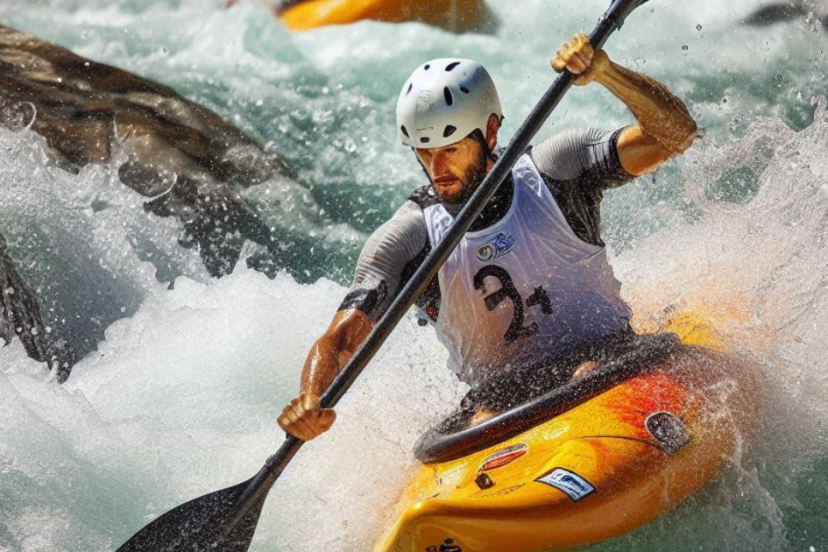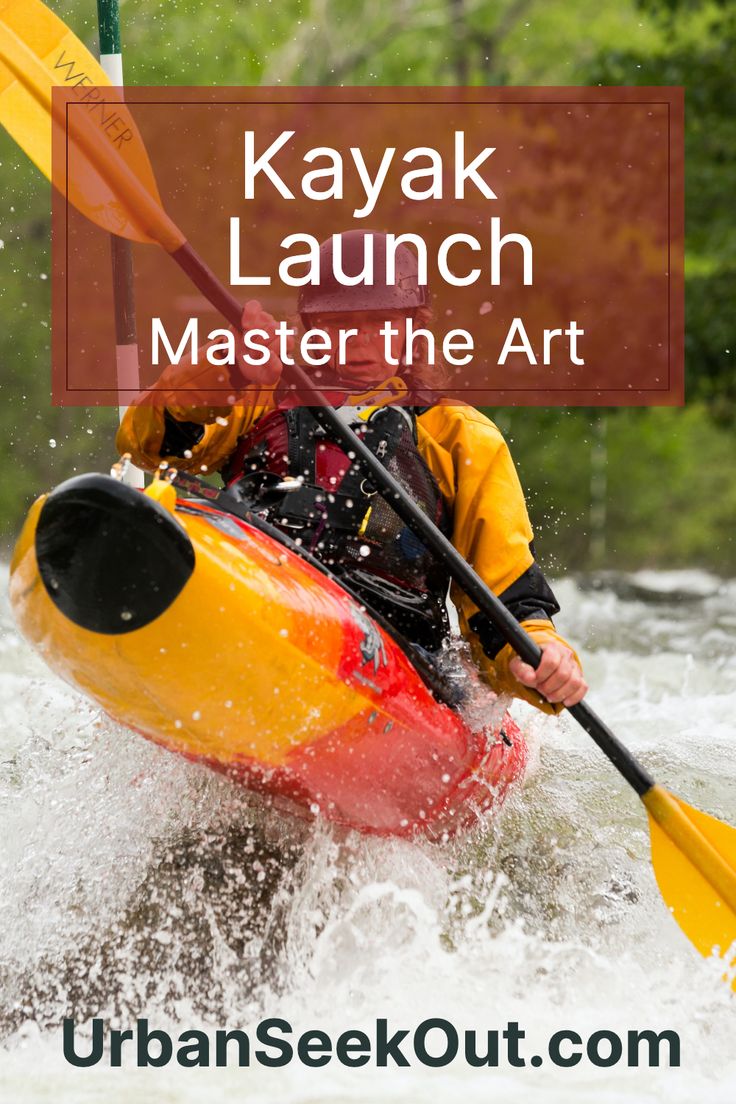Kayak Launch: Mastering the Art – Learn Tips for Smooth Starts
Kayaking is more than just a recreational activity; it’s a way to connect with nature and explore hidden gems on the water. One of the essential aspects of this experience is the kayak launch, which sets the tone for your entire journey. In this article, I’ll share my expertise as a kayak enthusiast and advisor, offering valuable suggestions and reasons for your kayak launch success.
Choosing the Right Location
When it comes to embarking on a kayaking adventure, one of the first decisions you’ll need to make is where to launch your kayak. The choice of location sets the stage for your entire journey, influencing everything from the ease of your launch to the type of experience you’ll have. Here, I’ll provide some guidance on the factors to consider when choosing the right kayak launch location.
Factors to Consider
1. Water Conditions:
Before you even dip your paddle in the water, it’s crucial to assess the current water conditions. Is the water calm and placid, or is it a bit choppy with waves? Different locations may offer varying water conditions, and your choice should align with your skill level and comfort. Novices might prefer calmer waters, while experienced kayakers may seek a bit of adventure in more challenging conditions.
2. Proximity to Destination:
Think about where you intend to go on your kayaking journey. Is there a specific destination you want to reach, such as a secluded cove or a hidden island? The location of your kayak launch should be strategically chosen to minimize the distance you need to paddle to reach your destination. This minimizes fatigue and ensures you have more time to enjoy the destination.
3. Ease of Access:
Consider how easily you can access the launch point. Are there dedicated kayak ramps, docks, or designated launching areas? Or will you need to carry your kayak some distance to reach the water? Easy access can significantly reduce the physical strain and make the entire experience more enjoyable.
4. Scenic Beauty:
Part of the joy of kayaking is the opportunity to immerse yourself in natural beauty. Look for launch locations that offer scenic views, abundant wildlife, or unique geological features. These factors can enhance your overall kayaking experience and make it more memorable.
5. Amenities and Facilities:
Depending on the length of your adventure, you might want to choose a location with nearby amenities and facilities. Access to restrooms, picnic areas, or a place to grab a snack can be a bonus, especially for longer journeys.
6. Local Regulations:
Be aware of any local regulations or restrictions at your chosen launch location. Some places may have rules regarding kayaking hours, speed limits, or wildlife protection. Knowing and adhering to these rules is essential for both your safety and preserving the environment.
7. Type of Kayak
Ensure you carry out good research of types of Kayaks available from Inflatable Kayaks to Foldable Kayaks.
By carefully considering these factors, you can choose the perfect kayak launch location that suits your preferences and ensures a smooth start to your kayaking adventure. Whether you’re seeking tranquility in a serene lake or the thrill of waves in the open sea, the right choice will set the tone for an enjoyable journey.
Proper Equipment and Gear
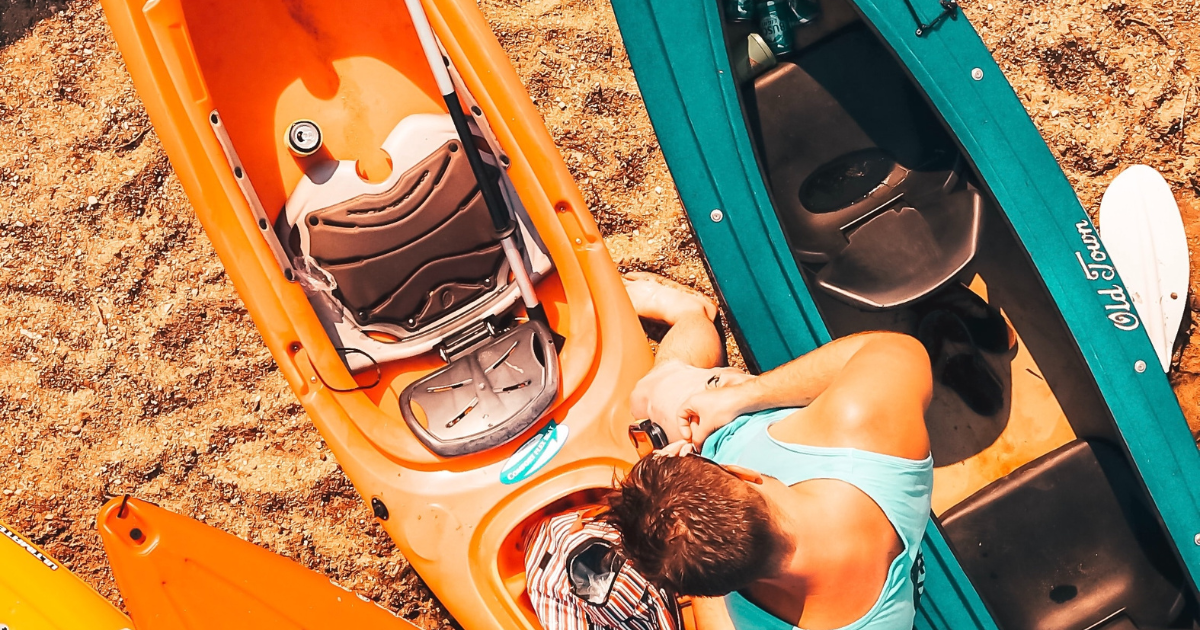
As an avid kayaking enthusiast, I can’t stress enough the importance of having the right equipment and gear for a successful kayak launch and an enjoyable paddle on the water. Let’s dive into the essentials you need to make your kayaking adventure safe and fun.
Essential Gear for Kayak Launch
1. Paddle:
The heart and soul of your kayaking experience is your paddle. Ensure you choose the right size and style of paddle that suits your kayaking needs. Longer paddles are great for open water, while shorter ones work well in narrow rivers or creeks.
2. Life Jacket (PFD – Personal Flotation Device):
Safety first, always. A properly fitted life jacket is non-negotiable. Even if you’re a strong swimmer, accidents can happen, and a life jacket could be a lifesaver.
3. Safety Whistle:
A whistle is a compact and essential piece of safety equipment. It can be your lifeline in case of an emergency or if you need to alert others to your presence.
4. Bilge Pump or Sponge:
It’s not uncommon for kayaks to take on a little water, and a bilge pump or sponge helps you keep your kayak dry and you more comfortable.
5. Dry Bags:
Protect your essentials like snacks, a change of clothes, or your phone from water. Dry bags are a must, especially for longer trips.
6. Kayak Cart or Trolley:
If your launch site involves carrying your kayak over a distance, a kayak cart can be a game-changer. It saves you energy and prevents unnecessary strain.
Top 3 kayak launch products
1. Suspenz Fishing Kayak Cart Trolley
Suspenz Fishing Kayak Cart Trolley is a heavy-duty, versatile carrier designed for transporting various watercraft, including fishing kayaks, canoes, and Jon boats. It features adjustable Bunker Bars, airless wheels, and a no-rust aluminum frame, making it suitable for multiple terrains. The cart is easy to assemble and includes a secure tie-down strap system.
Pros:
– Versatile Adjustments : Fits different hull shapes and sizes with adjustable Bunker Bars.
– Durable Build : Airless wheels and a no-rust aluminum frame ensure longevity.
– User-Friendly : Tool-free assembly and easy disassembly.
– Stable Transport : Secure tie-down system with a four-point attachment.
Cons:
– Performance on Soft Sand : Struggles in soft sand conditions.
– Strap System Issues : Some users find the strap system difficult to adjust for certain hull designs.
– Stability Concerns : May require extra strapping for specific watercraft.
2. YakGear Kayak & Canoe Outriggers (Generation 2)
YakGear Kayak & Canoe Outriggers (Generation 2) is a set of stabilizers designed to enhance the stability of your kayak or canoe. These outriggers are easy to install using the included RAILBLAZA StarPort base and are made in the USA. The kit includes adjustable outrigger arms, floats, and all necessary mounting hardware.
Pros:
– Enhanced Stability : Ideal for standing or navigating rough waters.
– Easy Installation : Clear instructions and necessary hardware included for simple setup.
– Durable Construction : Made with saltwater-resistant, long-lasting materials.
– Convenient Design : Outriggers can be easily removed, leaving a low-profile base.
Cons:
– Higher Price Point : Considered expensive by some users, though the quality justifies the cost.
– Size Limitations : Smaller-than-expected floats may affect perceived stability.
– Potential Assembly Issues : Some customers reported challenges with the installation, particularly with self-tapping screws and mismatched angles.
3. RAD Sportz Kayak Trolley Pro Premium Kayak
RAD Sportz Kayak Trolley Pro is a premium kayak cart designed to easily transport kayaks or canoes with a 150 lb capacity. Made from durable, yellow powder-coated aluminum, it comes with 10″ no-flat airless tires and includes tie-down straps and a mesh carry bag for compact storage.
Pros:
– Sturdy Build : Handles heavy kayaks with ease, making it ideal for various terrains.
– Easy Assembly : Quick and simple to set up, with minimal effort required.
– Compact Storage : Folds down into a mesh carry bag for convenient storage and portability.
– Durable Materials : High-quality construction withstands long-term use, even in saltwater environments.
Cons:
– Strap Design : The included straps can be cumbersome, with some users preferring to replace them with easier-to-use alternatives.
– Stability Issues : May not work well with all kayak models, particularly those with unusual shapes.
– Rust Concerns : Some users noted that the wheel pins tend to rust over time, especially with saltwater exposure.
Top Preferred Product
RAD Sportz Kayak Trolley Pro is the preferred choice for its overall balance of durability, ease of assembly, and compact storage, making it ideal for most kayaking needs. While it has some minor drawbacks like strap design and rust concerns, its sturdy build and portability make it the best option among the three.
Safety First – Life Jackets and More
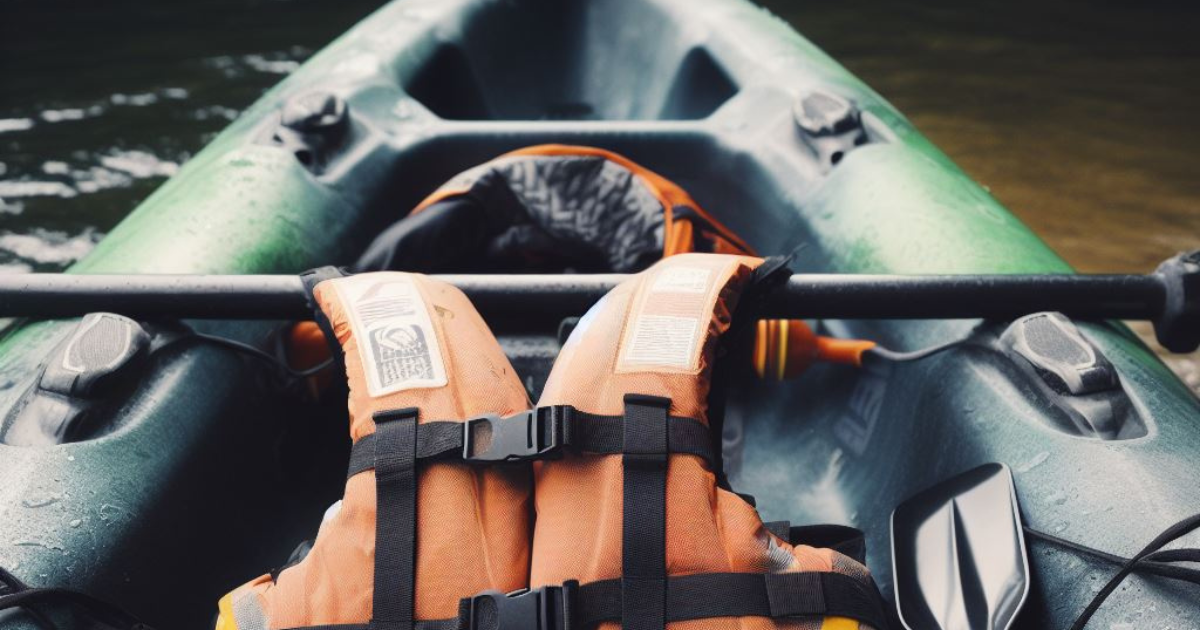
Your life jacket, or personal flotation device (PFD), is your closest companion on the water. Even if you’re an experienced swimmer, a PFD is a non-negotiable piece of equipment for kayaking. It’s your safety net in case of capsizing or unexpected conditions.
When choosing a PFD, ensure it’s the right size and fits snugly. An ill-fitting PFD can be uncomfortable and less effective. Look for options that provide freedom of movement and have handy pockets for storing small essentials.
Besides your PFD, other safety essentials include a whistle to signal for help and a bilge pump or sponge to keep your kayak dry. Accidents can happen, and being prepared with the right gear can make all the difference.
Remember, safety should never be compromised, and having the right equipment not only ensures your well-being but also enhances your kayaking experience.
Kayaking is all about getting close to nature, enjoying the tranquility of the water, and exploring new horizons. The right gear ensures you can do all this while staying safe and comfortable on your kayak. So, before you launch, double-check your equipment to make sure you’re ready for an incredible adventure on the water.
Launch Techniques
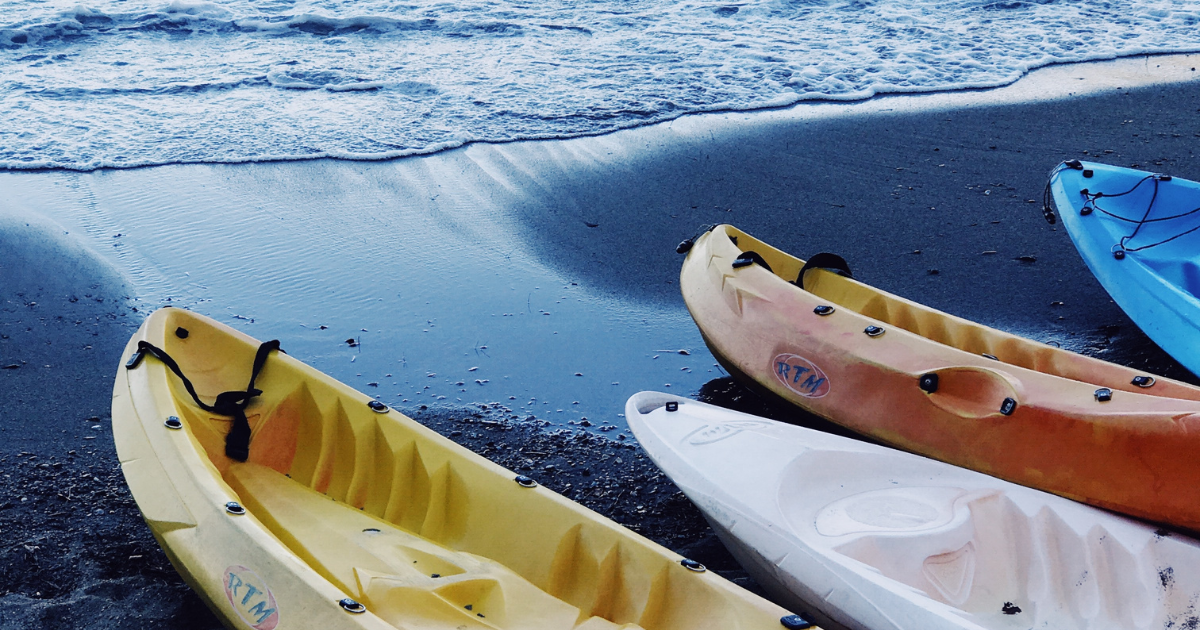
Now that you’ve got the right gear and chosen the perfect kayak launch location, it’s time to master the art of kayak launching. Whether you’re paddling solo or with a partner, the way you launch your kayak can make all the difference in your kayaking experience. Let’s explore two common techniques: solo launching and tandem launching.
Solo Launching
Launching a kayak by yourself might seem a bit challenging at first, but with practice, it becomes second nature. Here’s how to do it:
Step 1: Position Your Kayak
– Start by placing your kayak parallel to the water with the bow (front) facing the water.
Step 2: Prepare Your Gear
– Ensure all your gear is properly stowed and secured in the kayak. Check that your paddle is within easy reach.
Step 3: Get In
– Sit on the edge of the kayak’s seat and lower your legs into the cockpit. As you do this, hold onto the kayak’s sides for stability.
Step 4: Slide In
– Slowly slide your body into the kayak while maintaining your balance. Once you’re in, keep your weight centered.
Step 5: Launch
– Push off the shore with your hands or paddle and start paddling. As you move into deeper water, slide your legs fully into the cockpit and settle into your seat.
Tandem Launching
If you’re kayaking with a partner, tandem launching can be a smooth and coordinated process. Here’s how to do it:
Step 1: Position Your Kayak
– Place the tandem kayak parallel to the water with one end on the shore and the other in the water.
Step 2: Gear Preparation
– Make sure all your gear is secure, and both paddlers have their paddles within reach.
Step 3: Sit and Balance
– Both paddlers should sit on the edge of their respective seats and lower their legs into the cockpit, all while maintaining balance.
Step 4: Entry and Balance
– Simultaneously slide into the kayak, ensuring that your movements are synchronized. The paddler at the back should enter first. Once both paddlers are in, maintain your balance.
Step 5: Launch in Harmony
– To launch, both paddlers should push off the shore using their hands or paddles and start paddling together. Effective communication is key here to ensure your kayak moves smoothly and steadily into deeper water.
Solo launching provides you with independence and a sense of accomplishment, while tandem launching relies on cooperation and teamwork. Both techniques can be incredibly rewarding, allowing you to embark on your kayaking adventure with confidence.
Remember that practice makes perfect, and over time, you’ll refine your launching technique, making it a seamless part of your kayaking experience. So, whether you’re paddling alone or with a partner, enjoy the process of launching and let it be the gateway to your aquatic adventure.
Keeping Your Kayak Shipshape
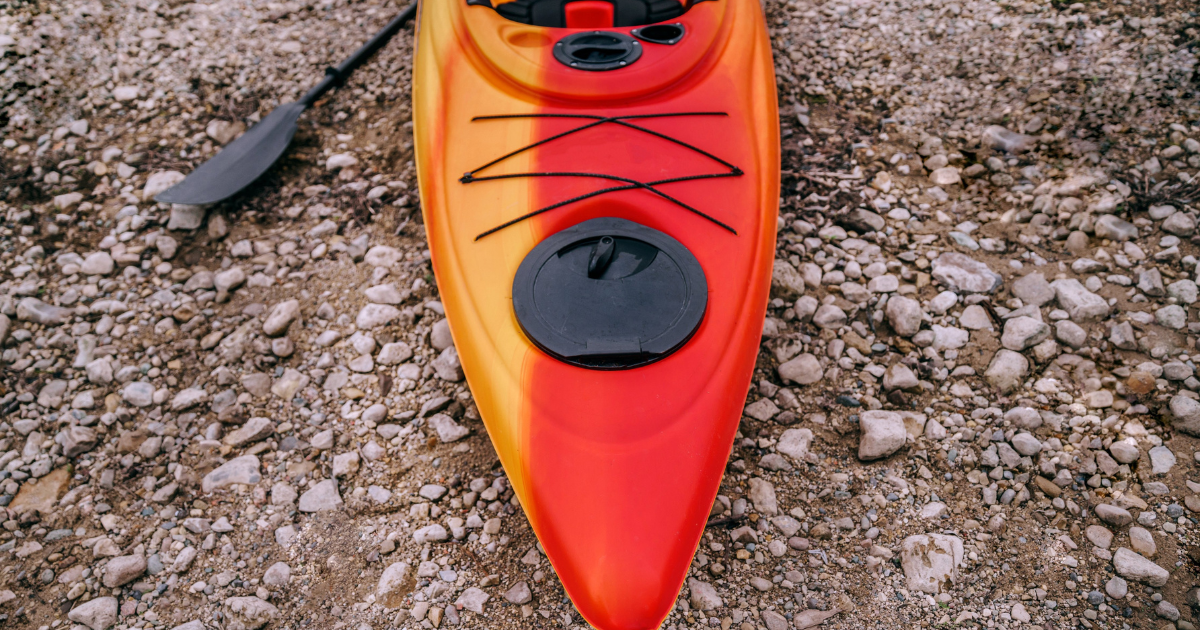
Just like any other equipment, your kayak needs regular maintenance to keep it in top shape. Neglecting maintenance can lead to problems on the water, so it’s essential to know how to keep your kayak shipshape. Let’s dive into some basic kayak maintenance tips.
1. Clean Thoroughly:
After each outing, make it a habit to clean your kayak. Use freshwater and a mild detergent to remove dirt, salt, and grime. Pay extra attention to areas like the cockpit, which tend to accumulate debris.
2. Check for Damage:
Inspect your kayak for any signs of damage, such as cracks, dents, or punctures. If you find any, address them promptly. Small issues can escalate into significant problems if left unattended.
3. UV Protection:
If your kayak spends a lot of time in the sun, consider using UV protectant products. Sunlight can cause the kayak’s plastic to degrade over time. UV protection helps extend its lifespan.
4. Lubricate Moving Parts:
If your kayak has moving parts, like rudders or pedals, make sure they are well-lubricated. This ensures smooth operation and prevents premature wear and tear.
5. Storage:
Proper storage is crucial. If you can, store your kayak indoors or under a cover. Exposure to the elements, especially extreme temperatures, can harm the kayak’s materials.
6. Repairs:
Learn basic kayak repair techniques, like patching up small holes or cracks. Having a repair kit on hand is a wise move for any kayaker.
7. Kayak Hull:
The hull of your kayak is the part that’s in constant contact with the water. Periodically inspect it for scratches and damage. Minor scratches are normal wear and tear, but deep gouges can affect performance.
8. Kayak Seat and Cockpit:
Check your kayak’s seat and cockpit area for signs of wear. Ensure that straps, buckles, and adjustments are all in good working condition.
9. Skeg and Rudders:
If your kayak has a skeg or rudder, check that they are properly attached and functioning as intended. These components are critical for maintaining control on the water.
10. Freshwater Rinse:
If you’ve been kayaking in saltwater, it’s especially important to give your kayak a thorough freshwater rinse to remove salt residue. Salt can corrode metal parts and degrade materials over time.
Taking care of your kayak not only extends its lifespan but also ensures your safety on the water. Regular maintenance helps you identify and address potential issues before they become serious problems. It’s a way to show appreciation for your kayak, which, in return, will provide you with many more memorable adventures. So, make maintenance and care a part of your kayaking routine, and your kayak will continue to be your reliable partner in exploration.
Benefits of Proper Kayak Launching
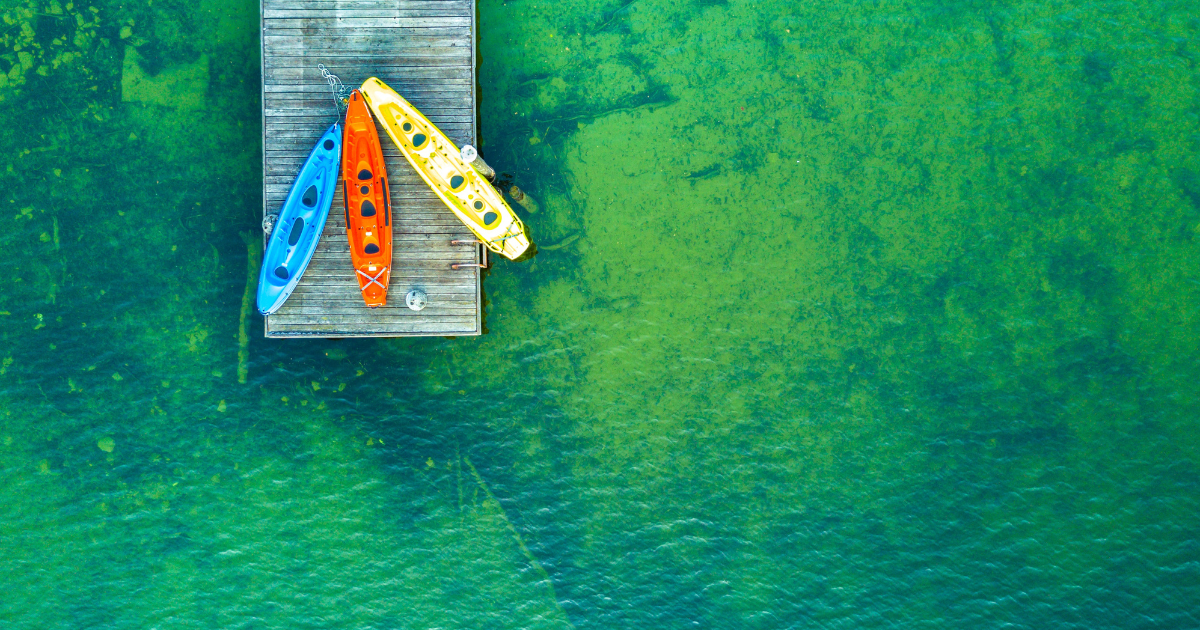
Launching your kayak the right way isn’t just a matter of safety; it’s a gateway to enhancing your entire kayaking experience. Let’s explore how proper launching techniques can make your adventure on the water more enjoyable and memorable.
Enhancing the Kayaking Experience
1. Smooth Start:
Proper launching sets the stage for your kayaking journey. It ensures a smooth and effortless start, which means less stress and more enjoyment right from the beginning. No one wants to wrestle with their kayak at the water’s edge, so a well-executed launch gets you off to a good start.
2. Stress Reduction:
A controlled and coordinated launch, whether solo or tandem, reduces stress and anxiety. When you know what you’re doing and can execute it smoothly, you can focus on the beauty of your surroundings rather than fretting about the process.
3. Improved Safety:
Proper launching techniques prioritize safety. Launching without knowing what you’re doing can lead to accidents or capsizing. When you launch with care, you’re safeguarding yourself and your companions, ensuring a secure and worry-free trip.
4. Energy Conservation:
Launching can be physically demanding, especially if you’re wrestling with your kayak or battling strong currents. Proper techniques conserve your energy for the actual paddling, allowing you to explore for longer and go further.
5. Enjoyable Tandem Kayaking:
For those in tandem kayaks, proper launching is vital for synchronization. It ensures that both paddlers are on the same page and that your kayak moves smoothly from the shore into deeper water. This harmony enhances the entire experience of paddling with a partner.
6. Environmental Respect:
Launching your kayak with care also shows respect for the environment. Thrashing about in the water or dragging your kayak through sensitive habitats can harm ecosystems. Launching responsibly allows you to enjoy nature while preserving it for others to appreciate.
7. Memorable Moments:
The joy of kayaking lies in the moments of tranquility and the thrill of exploration. Proper launching gets you to those moments faster, without the frustration of a bungled start. These memorable moments are the essence of kayaking.
In the world of kayaking, the launch is your grand entrance to an aquatic adventure. With the right techniques, you not only ensure your safety but also elevate the entire experience. You get to savor the sights, sounds, and sensations of the water in a way that a chaotic launch could never provide.
So, whether you’re a seasoned kayaker or a novice, refining your launching techniques is a way to enhance your connection with nature, your enjoyment of the sport, and your appreciation for the art of kayaking. Proper launching techniques are the threshold to a world of unforgettable moments on the water.
Exploring 15 Picturesque Kayak Launch Spots Across the USA: A Personal Journey
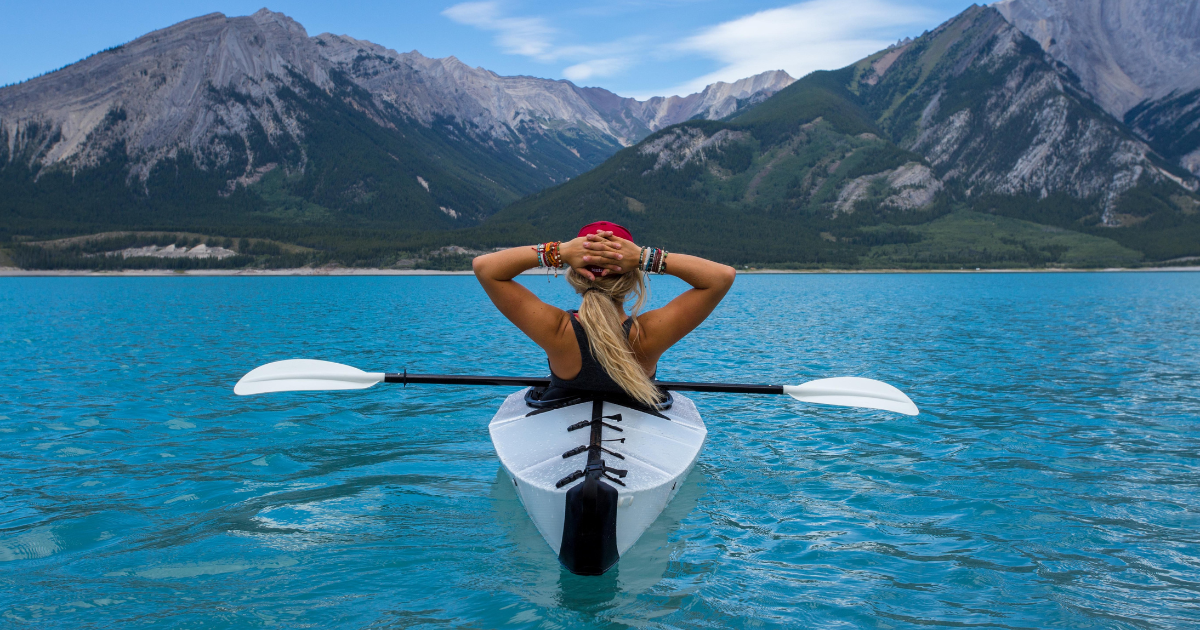
As an ardent kayaker with a thirst for adventure, I’ve had the privilege of paddling through some of the most captivating landscapes that the United States has to offer. From serene lakeshores to majestic coastlines, each kayak launch spot has left an indelible mark on my soul. Join me as I take you on a personal journey through 15 of these remarkable locations, sharing insights into ease of access, hiking highlights, available amenities, and suitable experience levels.
1. Acadia National Park, Maine
– Ease of Location: Easily accessible launch points, including Seal Cove.
– Key Highlights: Outdoor hiking enthusiasts can’t miss the Precipice Trail with dramatic cliffs and panoramic views.
– Amenities: Parking, restrooms, and visitor centers available.
– Experience Level: Suitable for all levels, with calm waters and moderate tides.
2. Lake Tahoe, California/Nevada
– Ease of Location: Multiple launch sites, such as Kings Beach and Sand Harbor.
– Key Highlights: Nearby hiking trails like the Rubicon Trail offering sweeping lake vistas.
– Amenities: Parking, picnic areas, and restrooms available.
– Experience Level: Varies, with options for beginners to experts.
3. Everglades National Park, Florida
– Ease of Location: Various launch points for diverse kayaking experiences.
– Key Highlights: Paddle through mangroves and witness unique wildlife.
– Amenities: Visitor centers and limited facilities available.
– Experience Level: Best suited for intermediate to advanced kayakers due to potential tidal challenges.
4. Lake Powell, Utah/Arizona
– Ease of Location: Launch from Antelope Point Marina for easy access.
– Key Highlights: Hike to iconic spots like Rainbow Bridge National Monument.
– Amenities: Marina facilities, boat tours, and equipment rental.
– Experience Level: All levels, depending on the chosen paddling route.
5. Columbia River Gorge, Oregon/Washington
– Ease of Location: Launch from Rooster Rock State Park.
– Key Highlights: Adjacent hiking trails offer views of waterfalls and natural beauty.
– Amenities: Restrooms, picnic areas, and beach access.
– Experience Level: Suitable for intermediate kayakers due to potential currents.
6. Lake Michigan, Chicago, Illinois
– Ease of Location: Montrose Beach and Burnham Park offer accessible launch points.
– Key Highlights: Explore waterfront parks and city skyline views.
– Amenities: Urban amenities, restrooms, and eateries nearby.
– Experience Level: All levels, with relatively calm waters near the shore.
7. Lake Champlain, Vermont/New York
– Ease of Location: Launch from Burlington for easy access.
– Key Highlights: Venture into the Adirondacks and Green Mountains via hiking trails.
– Amenities: Restrooms, kayak rentals, and picnic areas.
– Experience Level: All levels, with varying routes to explore.
8. San Juan Islands, Washington
– Ease of Location: Launch from San Juan Island for island hopping.
– Key Highlights: Hike along trails offering panoramic sea views and wildlife encounters.
– Amenities: Limited facilities; plan supplies accordingly.
– Experience Level: Intermediate to advanced due to potential currents and open water.
9. Okefenokee Swamp, Georgia/Florida
– Ease of Location: Suwannee Canal Recreation Area provides easy access.
– Key Highlights: Paddle through unique swamp ecosystems; limited hiking opportunities.
– Amenities: Visitor center, boardwalk, and restrooms.
– Experience Level: All levels, though beginners may appreciate guided tours.
10. Pictured Rocks National Lakeshore, Michigan
– Ease of Location: Launch from Miner’s Beach for lakeside entry.
– Key Highlights: Hike along the cliffs and witness iconic sandstone formations.
– Amenities: Parking, restrooms, and trailheads nearby.
– Experience Level: Intermediate kayakers due to potential waves and wind.
11. Eagle Harbor, Michigan
– Ease of Location: Launch from the serene harbor on the Keweenaw Peninsula.
– Key Highlights: Nearby hiking trails reveal shipwrecks and stunning shoreline.
– Amenities: Limited facilities; plan accordingly.
– Experience Level: All levels, with calm harbor waters.
12. Lake Powell, Kentucky
– Ease of Location: Launch from Lake Barkley State Resort Park.
– Key Highlights: Combine kayaking with hiking trails within the park.
– Amenities: Lodging, camping, and park facilities available.
– Experience Level: Suitable for all levels, with calm lake waters.
13. Boundary Waters Canoe Area Wilderness, Minnesota
– Ease of Location: Launch from Ely to access interconnected lakes.
– Key Highlights: Explore pristine wilderness and hike through boreal forests.
– Amenities: Campsites, portages, and natural beauty.
– Experience Level: Intermediate to advanced due to remote setting.
14. Biscayne Bay, Florida
– Ease of Location: Launch from Crandon Park for bay exploration.
– Key Highlights: Paddle near mangroves and hike coastal trails.
– Amenities: Parking, restrooms, and nearby attractions.
– Experience Level: All levels, with protected bay waters.
15. Monterey Bay, California
– Ease of Location: Launch from Monterey Beach or Moss Landing.
– Key Highlights: Paddle amid marine life; hiking trails offer ocean views.
– Amenities: Parking, restrooms, and coastal charm.
– Experience Level: Intermediate to advanced due to potential waves.
Whether you’re a beginner seeking serene waters or an experienced kayaker yearning for a challenge
Conclusion
In the world of kayaking, the process of launching your kayak is more than just a practical necessity; it’s an art that sets the stage for your entire adventure. As an enthusiast and advisor, I’ve shared valuable insights to help you make the most of your kayak launches. Let’s recap the key points and get you ready for your next kayak adventure.
Recap of Key Points
– Choosing the Right Location: Your choice of launch location affects the ease and enjoyment of your kayaking journey. Consider factors like water conditions, proximity to your destination, and ease of access.
– Proper Equipment and Gear: The right gear, including a well-fitted life jacket, paddle, safety whistle, and other essentials, is crucial for safety and comfort.
– Launching Techniques: Whether you’re launching solo or with a partner, mastering the right techniques ensures a smooth start to your kayak adventure.
– Maintenance and Care: Regular maintenance and care are essential to keep your kayak in top shape and ensure its longevity.
– Benefits of Proper Launching: Proper launching techniques enhance your kayaking experience by providing a smooth start, reducing stress, improving safety, conserving energy, and more.
Ready to Launch Your Kayak?
With the knowledge and insights you’ve gained, you’re now well-prepared to embark on your next kayak adventure. The joy of gliding through the water, connecting with nature, and exploring new horizons awaits.
Remember to choose your launch location wisely, ensure your gear is in order, and apply the proper launching techniques to make your journey as enjoyable and safe as possible. And don’t forget to give your kayak the care it deserves to keep it in excellent condition.
So, grab your paddle, don your life jacket, and take that first step into the water. Kayak launching is not just about setting sail; it’s about setting the stage for unforgettable moments on the water. Enjoy your adventures, and may each launch be the beginning of another incredible journey.
FAQs: Kayak Launch
As a passionate kayaker and advisor, I’ve encountered many questions about kayaking and kayak launching. Let’s address some of the most common and important ones to help you embark on your kayaking adventures with confidence.
1. Is it necessary to wear a life jacket for a kayak launch?
Absolutely, yes! Wearing a life jacket is non-negotiable when kayaking. Even if you’re a strong swimmer, accidents can happen, and a life jacket can be a lifesaver. Always wear a pro perly fitted life jacket for your safety.
2. What should I do if I encounter strong currents during a launch?
Strong currents can be challenging. If you encounter them during a launch, prioritize safety. Consider postponing your launch until conditions are more favorable. If you must launch, do so with extra caution and ensure you’re wearing your life jacket.
3. Can I launch a kayak alone, or is it better with a partner?
You can absolutely launch a kayak alone, but it’s often safer and more enjoyable with a partner, especially for tandem kayaks. Launching and paddling with a partner allows you to share the experience and offers added safety in case of emergencies.
4. How often should I inspect my kayak for maintenance?
Regularly inspect your kayak before each trip to ensure it’s in good condition. Perform thorough maintenance checks at least once a season. This helps identify any wear and tear that might need attention.
5. What are some advanced techniques for kayak launching?
Advanced techniques for kayak launching may include bracing against waves, performing assisted launches, and launching in adverse conditions. These techniques require more experience and skill, so it’s best to practice them after mastering the basics.
*We may earn a commission from purchases made through our links, at no cost to you. This does not affect our product recommendations. Please see our disclosure to learn more.

